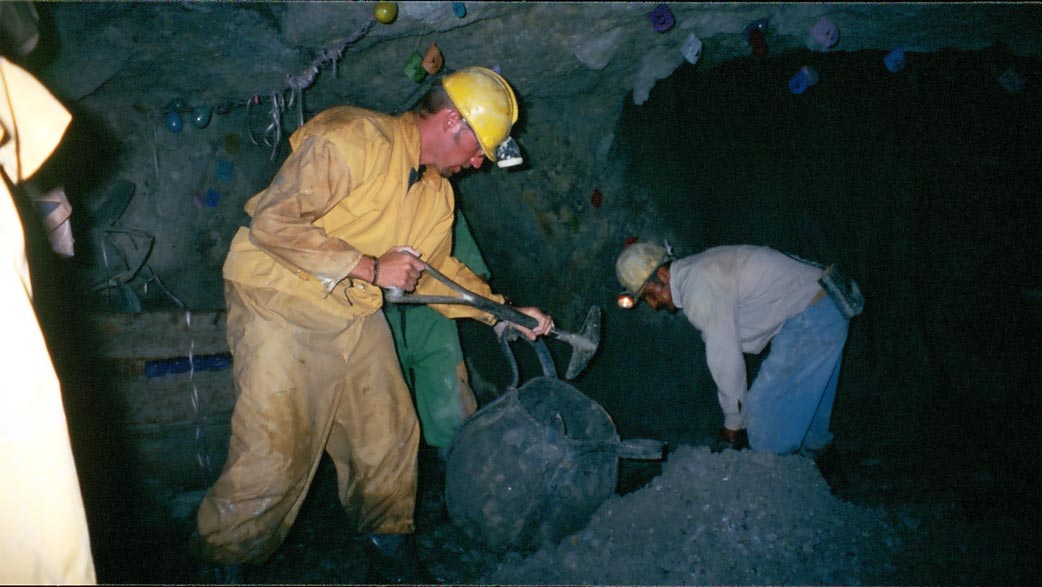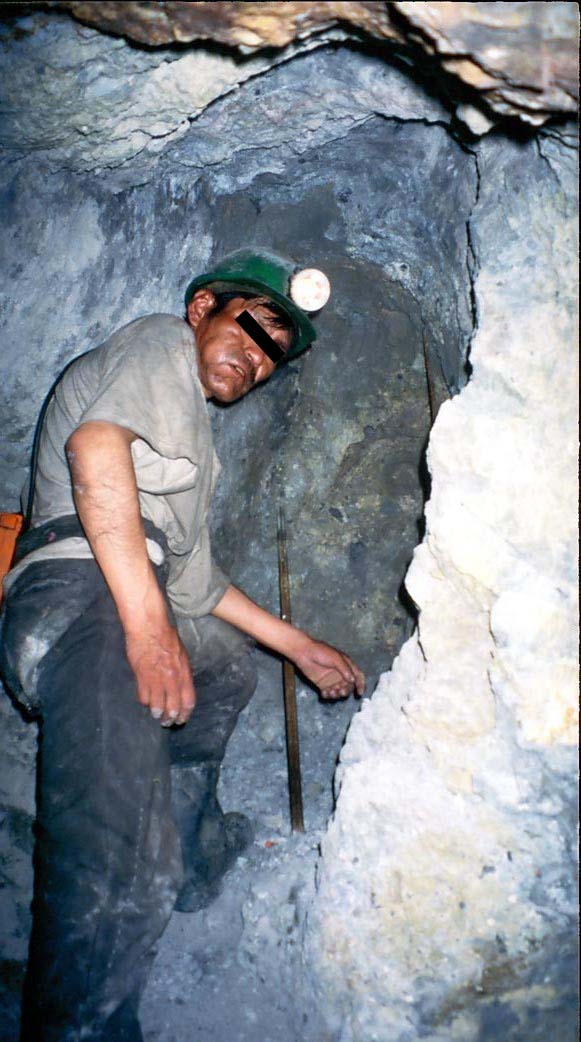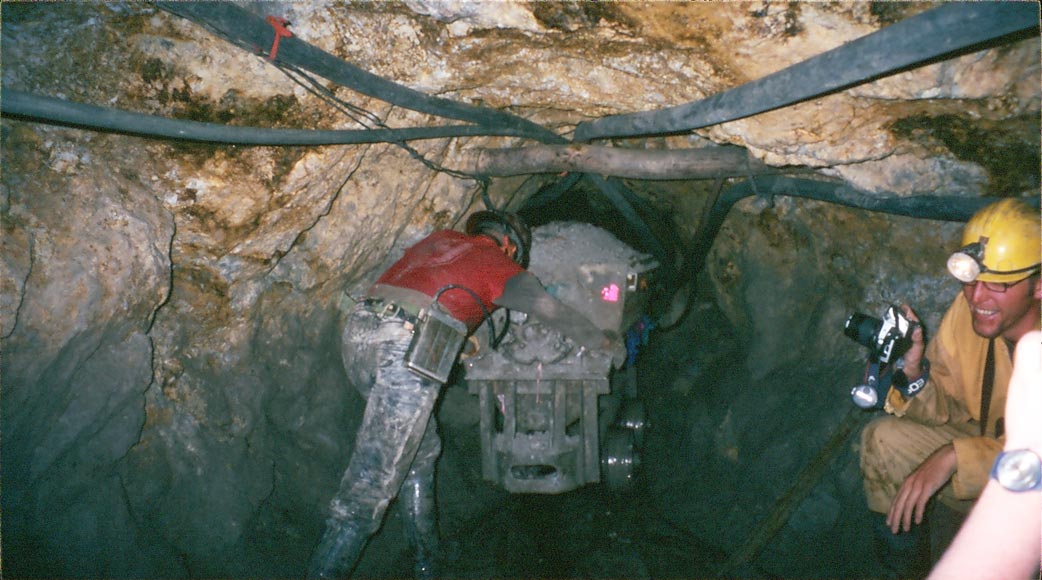
Travelogue Bolivia 2003
Potosi
The next morning we continued by bus to Potosi, one of the oldest and previously richest cities of South America. The town was founded in 1550 (+-) when the Spaniards discovered the silver mines of the indios. The bus ride was very scenic. But though this kind of travel is much more comfortable than a jeep (buses are definitely Latin-American but much better than in Guatemala) the problem is that you never have time to stop, enjoy the view and take a nice photo. I tried to take a few through the window and hope that one or two are good enough to give an impression.
Potosi is with some 100.000 inhabitants and an altitude of some 4200m the highest city of its size in the world. Huge parts of the town are as ugly as you expect it in Latin-America but the centre is dominated by an architecture that shows the town’s Spanish history and passed wealth. I haven’t seen much of it yet but it is so impressive that UNESCO declared the town as part of the World’s Cultural Heritage. We (that is Keith and I) took a room in a wonderful antique hotel. Today the city is very poor as the worth of the metals and the profitability of both mine and production processes has sunk dramatically. The most important minerals in this region are silver, lead, zinc and tin, the miners earn only some 125 USD a month ruining their health (more details below).
As tomorrow is Sunday and only few miners will be working we did the obligatory mine tour today and obviously it was the right decision to chose the little more expansive (nevertheless cheap) agency that is most recommended in the guide books. After the tour we met someone who took another company and got much less compared to our adventure. By the way: we had to sign that the company was not responsible for injuries or death occurring during the tour.
The trip started quite harmless. A bus took us from the office to another house where we got our equipment, waterproof jackets and trousers, Wellingtons, a helmet and a headlight. Then we went to the miners’ supermarket (some 6 sqm) where we bought dynamite (available without restrictions) and soft drinks as presents for the miners.
Finally to the mine. The entrance is at 4325m and right from the start we had to pass narrow passages so low that we had to walk bent down deeply. Close to the entrance there was a small museum that wasn’t too informative. Then we visited El Tio, the uncle, a statue of the devil, as mentioned above, he and Pachamama (mother earth) are the owners of the minerals and decide over the miners’ fate. Our guide Pedro did explain us a lot about that and we gave a cigarette and some alcohol to El Tio.
Then we visited a small tunnel on the so called first level where a man was driving holes for the dynamite into the ore with nothing but hammer and chisel. In other parts of the mine they use compressed air but only where the ore is good enough to justify this effort. he man was in his early forties and had worked in the mine for thirty years, working in hot and damp air, with low oxygen and various toxins in the air: arsenic, silicone (here the killer no. 1), asbestos, carbon monoxide and dust. When he spoke or breathed we could hear the sounds of his destroyed lungs and Pedro explained to us that this man would be taken to the hospital in some one or two years where he would die within another two years like most of the miners. Despite this fact he continued working as he felt himself useless spending his days at home and he had children to support. Actually this man was one of the lucky ones as he worked for 30 years in the mine before getting ill, most of them die earlier. Much luckier of course was our guide Pedro who had started to work in the mines at the age of 10 and five years later got the possibility to work as a tour guide spending much less times in the mines and not having to work there. For all the miners we met we left dynamite and drinks as presents.

Then we climbed down through the narrowest tunnels to the third level, some 25m below. Due to the altitude, the exertion, the heat and the gases (I was wearing a mask which hopefully protected me of the worst but made the heat and the lack of oxygen even less bearable) I felt for the first time of my life as if I couldn’t breath. In combination with the knowledge to be deep down in a mountain this easily makes you panic and I had to force myself to stand still for a moment, breath slowly, steadily and deeply until it got better. Later I learned that there had been another exit nearby and in the case of an incident we wouldn’t have had to return all the way. Anyway it has been the hardest excursion I ever did.

We visited another group of miners who worked seven days a week. Pedro explained to us that there were a lot of fiestas these days and the miners could not afford a day off if they wanted to finance the alcohol etc. for the parties. They spend the whole day in the mine, eat nothing but coca leaves which seems to be very justified considering their working conditions. If I hadn’t seen it myself I couldn’t believe it.
On the way back we visited a place where the ore was pulled up with electric winches and Keith and I, as the only male tourist in our group of six, were to help the minors shovelling the ore in the rubber baskets used for the transport. Due to the close connection to the outside the air was much better here and the work was comparatively feasible though very, very exhausting.

Then we climbed up again, sometimes we had to move on hands and knees through the narrow passages and were really happy to see the blinding sunlight. Pedro showed us how to build a cracker from dynamite, a fuse and a bag of ammonium nitrate, definitely the biggest and strongest cracker I’ve ever seen. He lit the fuse and gave the bomb to one of the girls before hiding himself behind the bus. Quite funny for us, not for the girl. After some seconds and when about a third of the fuse had gun and after we had taken some pictures of her, he took the dynamite from her and put it in a hole in the hill, some 20m from us. What an explosion, what a shock wave! The echo went round the surrounding mountains for a few seconds.
In the evening we met again with Pedro for a beer, chatted a while and learned some more interesting information, now we look forward to a shower and our beds.
My further plans are still uncertain, I don’t think that I will be able to do Tierra del Fuego, Patagonia and Antarctica during this journey but definitely I will go there. Slowly I am getting further north than I ever planed. Since yesterday I have the idea of taking a cargo boat for some four days through the jungle in the northern Bolivian lowlands. But till I get there some time will pass and my plans are most likely to change again.
All the best from Potosi, Bolivia
Volker